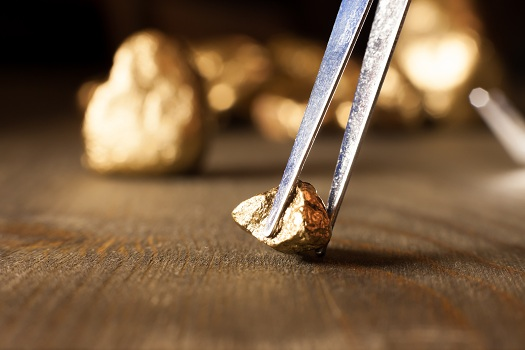How Can You Tell if a Metal Is White Gold?
Initially developed to imitate platinum, white gold is an alloy that, according to the United States Geological Survey, typically contains about 75 percent gold and a mixture of other metals that give it a whiter hue. A little copper may be added as well, but if there’s too much, you’ll have pink gold, not white gold. Because this gold variation can mimic other lighter-hued metals, the precious metals experts from First National Bullion, the gold dealers San Diego collectors rely on for outstanding expertise, offer some details to keep in mind when identifying white gold.
Check if It’s Bright & Durable
As mentioned above, white gold was originally designed to mimic platinum. For this reason, it’s not uncommon to assume something made of platinum is white gold, and vice versa. While both metals have a similar hue, platinum is typically a bit brighter. Also, if you’re seeing some signs of surface wear, you likely have white gold. Pure platinum is less susceptible to wear.
See if It Tarnishes
White gold may show signs of wear, but it won’t tarnish. If you’re noticing a dull, whitish surface on top of the metal piece you’re viewing, you likely have silver instead of white gold. This is because silver reacts to oxidation.
Determine if It Looks Like a Precious Metal
Aluminum is another type of white metal you may come across in your search for white gold. However, it doesn’t actually look like a precious metal. Aluminum is softer and more likely to be affected by scratches and wear. In general, if a lighter-hued metal piece doesn’t look like a precious metal, it probably isn’t.
Look for Markings
Not all white gold pieces will have markings, but most will. With jewelry, look for the “k” mark. This will tell you how many karats of pure gold are in the piece. For example, if it says 18k white gold, it’s 75 percent pure gold. White gold in bar form should have clear markings that indicate the metal type and content. There are some white gold coins, but they’re usually very old and rare ones.
Consider the Cost
This is a more uncertain way to tell if something is white gold. However, pieces that are true white gold tend to be more expensive than ones made of other precious metals that can have a whitish hue.
Use a Testing Kit
A more definitive way to identify white gold is with a standard testing kit. The drawback here is you’ll need to rub a bit of the item with a testing stone to do the test. If you haven’t yet purchased the piece in question, most sellers aren’t going to allow you to do this type of test.
Ask for Documentation
A less invasive way to identify white gold is to ask the seller for documentation that shows the metal content of the item. Reputable sellers, such as precious metals firms, are usually willing to provide clear documentation that provides all specifications related to the piece. This is also usually true with high-profile online sellers.
Whether you’re a veteran precious metals collector or just developing an interest in buying San Diego gold and bullion, reach out to the experts at First National Bullion. We offer a huge selection of platinum, gold, and silver items. San Diego collectors who are looking for the finest-quality coins, bars, and bullion should give us a call at 858-666-6570 to speak with one of our precious metals experts.
The statements made in this blog are opinions, and past performance is not indicative of future returns. Precious metals, like all investments, carry risk. Precious metals and coins may appreciate, depreciate, or stay the same in cash value depending on a variety of factors. First National Bullion does not guarantee, and its website and employees make no representation, that any metals for sale will appreciate sufficiently to earn the customers a profit. The decision to buy, sell, or borrow precious metals and which precious metals to purchase, borrow, or sell are made at the customer’s sole discretion.


